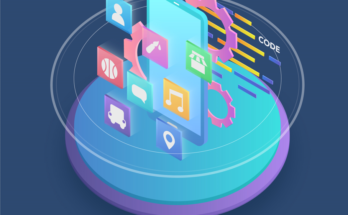To understand quantum computing, let have some basic ideas about quantum mechanics. Quantum mechanics, develop in the early 20th century, explains the nature and behaviour of matter and energy of the atomic and the subatomic level. A quantum is the smallest possible discreet unit of any physical property and it usually refers to properties of atomic or subatomic molecules i.e electrons, neutrinos and photons.
Table of Contents
What is Quantum Computing?
Quantum computers harness the unique behaviour of quantum mechanics apply it to computing. A new concept introduces to traditional programming methods with the help of quantum computing. Qubits is the basic unit of information of quantum computing.
Three Primary Parts Quantum Computer
- An area that houses the qubits.
- A method for transferring a signal to the qubits.
- A classical computer to run a program and send instructions.
What are Qubits and How do they differ from Binary Bits?
Qubits are generally subatomic particles such as electrons or photons, while a bit represents the flow of electrical or optical pulses which represents 1s or 0s. They play a similar role in quantum computing as bits play in traditional computing, but they behave very differently. While bits can hold only a position of 0 or 1, qubits can hold of superposition of all possible states. Qubits have some vital quantum properties, which means a connected group of qubits can provide far more processing power than the same number of binary bits.
Read Also:- How Automation Can Help Telecoms Companies Unlock Their Growth Potential
Applications of Quantum Computing
It has the potential to solve computational problems beyond the reach of classical computers and helps in exploring fields like drug discoveries, weather forecasting, securing financial transactions, cyber security, advanced level of manufacturing, etc.
Some key domains of application of quantum technology
- Quantum Communication: quantum key distribution utilises the unique properties of a quantum mechanical system to generate and distribute cryptographic keying material for secure communication.
- Quantum Simulation: quantum computer works exceptionally well for modelling Other Quantum systems. For example, we can model include photosynthesis, superconductivity and complex molecular formations using quantum computing.
- Quantum Machine Learning: It is the integration of quantum algorithms within machine learning. Ongoing research suggests that the implementation of quantum software can enable fast and machine learning.
- Optimisation: The process by which one can find the best solution to a problem given its desired outcome and constraints. By running quantum-inspired optimisation algorithms on classical computers, we can find solutions way to manage complex systems such as traffic flows, aeroplane gate assignments, package delivery and energy storage.
- Search: a quantum algorithm developed in 1996 dramatically sped up the solution to structured data searches, running the search in fever steps than any classical algorithm could.
- Cryptography: classical cryptography relied on the intractability of problems such as integer factorisation or discrete logarithms. Many of these problems can be solved easily, effectively and more efficiently with the help of quantum computers.
QSIM – Quantum Computer Simulator Toolkit and Quantum Computing
QSIM toolkit allows the researchers, scientists and students to write and access quantum code that is essential for developing quantum algorithms. The aim of QISM is to provide easy access and affordability to the researchers and students to carry out research in quantum computing (QC) in a cost-effective manner. QSIM toolkit came out from the project “Design and development of quantum computer toolkit simulator, workbench and capacity building”. It is one of India’s first initiatives to address the common challenges of advancing the quantum computing research edges in the country. This project is being executed collaboratively by IISc Bangalore, IIT Roorkee and C-DAC with the support of the Ministry of electronics and information technology.




